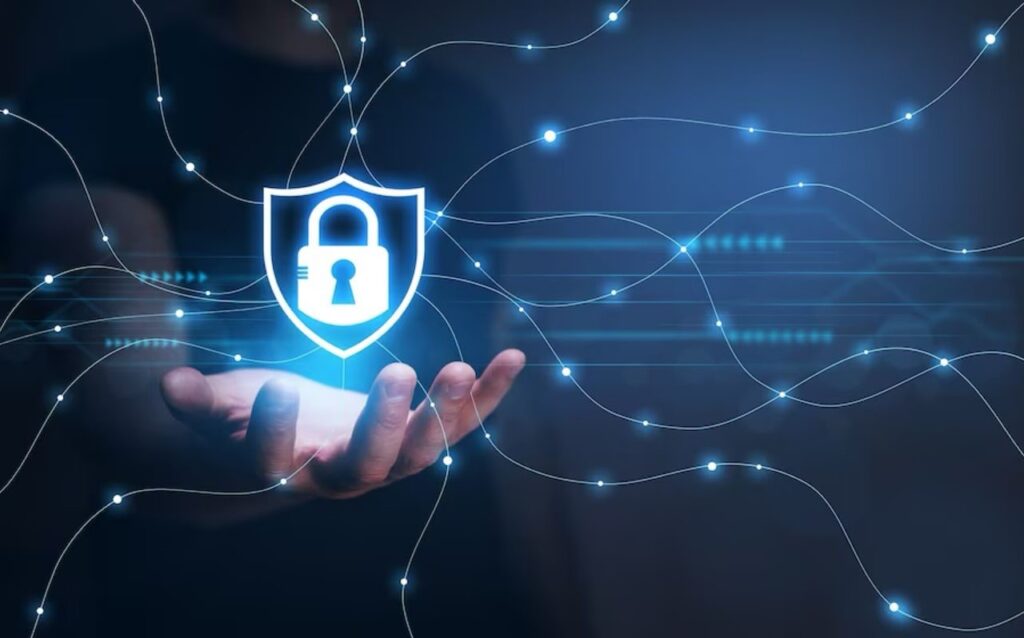Essential Cybersecurity Controls
There are many different cybersecurity controls that organizations can implement to protect their systems and data, but here are some of the essential ones:
Access controls
Access controls are a fundamental security measure that limit who can access specific systems, applications, or data. Implementing strong authentication mechanisms, such as multi-factor authentication, and establishing appropriate authorization levels can prevent unauthorized access and protect sensitive data.
Access controls help organizations to prevent unauthorized access, protect sensitive information, and ensure that only authorized users have access to sensitive systems and data.
There are several types of access controls that can be used, including:
- Authentication: Authentication is the process of verifying a user’s identity. This is typically achieved by requiring a username and password or other credentials such as biometric data (e.g., fingerprints, facial recognition) or security tokens.
- Authorization: Authorization is the process of determining whether a user is allowed to access a specific system, application, or data based on their identity and level of access. Authorization is typically defined by roles and permissions, and access is granted based on the user’s role and level of authorization.
- Access control lists (ACLs): ACLs are lists of permissions associated with specific resources, such as files or folders. ACLs can be used to define which users or groups have access to specific resources and what actions they can perform on those resources.
- Role-based access control (RBAC): RBAC is a method of restricting access based on the roles and responsibilities of users within an organization. RBAC assigns permissions to specific roles, and users are granted access based on their role.
- Attribute-based access control (ABAC): ABAC is a method of restricting access based on attributes associated with the user, such as their job title, location, or security clearance level. ABAC can be used to grant access to specific resources based on the user’s attributes
- Patch management: Regularly patching software and systems is critical to reducing vulnerabilities that could be exploited by attackers. Automated patch management tools can help ensure that all software and systems are kept up to date with the latest security patches.
Network segmentation
Network segmentation can help limit the scope of a cyberattack by separating critical systems and data from less critical ones. It does this by dividing a network into smaller subnetworks or segments to improve security and network performance.
By isolating different parts of the network from each other, network segmentation can help prevent unauthorized access to sensitive data, limit the spread of malware or other cyber threats, and reduce the impact of a security breach. This makes it more difficult for an attacker to move laterally within a network and access sensitive data.
Benefits of network segmentation include:
- Improved security: Network segmentation can help prevent unauthorized access to sensitive data and limit the spread of malware or other cyber threats.
- Compliance: Network segmentation can help organizations comply with industry regulations and standards by isolating sensitive data and restricting access to authorized users.
- Network performance: By separating different parts of the network, network segmentation can help to improve network performance and reduce network congestion.
- Flexibility: Network segmentation can make it easier to manage complex networks and allow for more flexibility in network design and configuration.
Overall, network segmentation is an essential component of any organization’s cybersecurity strategy, helping to reduce the risk of a security breach, protect sensitive data, and comply with industry regulations and standards.
Incident response planning
Having a robust incident response plan in place can help organizations respond quickly and effectively to a cyberattack. An incident response plan should outline the steps to take in the event of a security incident, including who to contact, how to contain the incident, and how to recover.
A cybersecurity incident can be any event that threatens the confidentiality, integrity, or availability of an organization’s information systems or data. Incident response planning is critical to minimize the impact of a cybersecurity incident and restore normal operations as quickly as possible.
An effective incident response plan should include the following elements:
- Incident response team: An incident response team should be established to manage the incident response plan. This team should consist of members from different parts of the organization, including IT, legal, and management.
- Incident detection and analysis: The plan should include procedures to detect and analyze potential cybersecurity incidents. This includes monitoring systems for suspicious activity, such as unauthorized access attempts or malware infections.
- Incident containment: The plan should outline procedures to contain the incident and prevent further damage to systems and data. This may involve isolating affected systems or disconnecting them from the network.
- Incident eradication and recovery: The plan should include procedures to eradicate the incident and recover affected systems and data. This may involve restoring data from backups or rebuilding affected systems.
- Communication: The plan should include procedures for communicating with stakeholders, such as customers, employees, and regulators, about the incident. This includes providing updates on the status of the incident and actions being taken to resolve it.
- Post-incident analysis: After the incident has been resolved, the plan should include procedures to analyze the incident and identify areas for improvement. This may involve conducting a post-mortem analysis to identify the root cause of the incident and making recommendations for future incident response planning.
An effective incident response plan should be regularly tested and updated to ensure that it remains effective in the face of changing cybersecurity threats and organizational changes.
Security awareness training
Employees are often the weakest link in an organization’s cybersecurity defenses. This is a process of educating employees about the risks and best practices associated with cybersecurity. Regular security awareness training can help employees recognize and avoid common security threats such as phishing attacks, social engineering, and malware.
Effective security awareness training programs should include the following elements:
- Risk awareness: Employees should be educated on the different types of cyber threats that may target them, such as phishing emails, social engineering attacks, and malware. They should also be taught how to identify and report these threats to the appropriate person or team within the organization.
- Best practices: Employees should be taught best practices for password management, secure file sharing, and safe browsing habits, among other topics. This includes using strong, unique passwords, avoiding public Wi-Fi networks, and being cautious when opening email attachments or clicking on links.
- Policies and procedures: Employees should be educated on the organization’s cybersecurity policies and procedures, including incident reporting protocols, access controls, and data handling procedures.
- Simulation exercises: Security awareness training should include simulation exercises that test employees’ ability to identify and respond to cybersecurity threats. These exercises may include phishing simulations, social engineering simulations, and other scenarios that simulate real-world cybersecurity threats.
Encryption
Encryption can help protect sensitive data both in transit and at rest. Implementing encryption for sensitive data such as payment information or personal data can reduce the risk of data breaches and protect the organization’s reputation.
The main purpose of encryption is to make data unreadable by unauthorized parties. Encryption is used in various applications, such as secure messaging, online payments, and data storage.
Encryption involves the use of an algorithm and a secret key. The algorithm performs mathematical operations on the plain text to convert it into cipher text, while the key is used to lock and unlock the encrypted data. The key must be kept secret by the sender and receiver to ensure that only authorized parties can decrypt the data.
Encryption has many benefits, including:
- Confidentiality: Encryption protects sensitive data from unauthorized access by ensuring that only authorized parties can decrypt the data.
- Integrity: Encryption ensures that the data has not been altered or tampered with during transmission by providing mechanisms for data authentication.
- Authentication: Encryption provides a means for verifying the identity of the sender and receiver by using digital certificates and signatures.
- Compliance: Encryption is often required by industry regulations and standards to protect sensitive data, such as financial information and personal identifiable information (PII).
Continuous monitoring
Continuous monitoring of systems and networks can help organizations detect and respond to security incidents in real-time. This includes monitoring for anomalous activity, such as unauthorized access attempts, and maintaining logs of all activity for audit purposes.
Implementing these essential cybersecurity controls can help organizations protect their systems and data from cyber threats and minimize the risk of a data breach or cyberattack.

